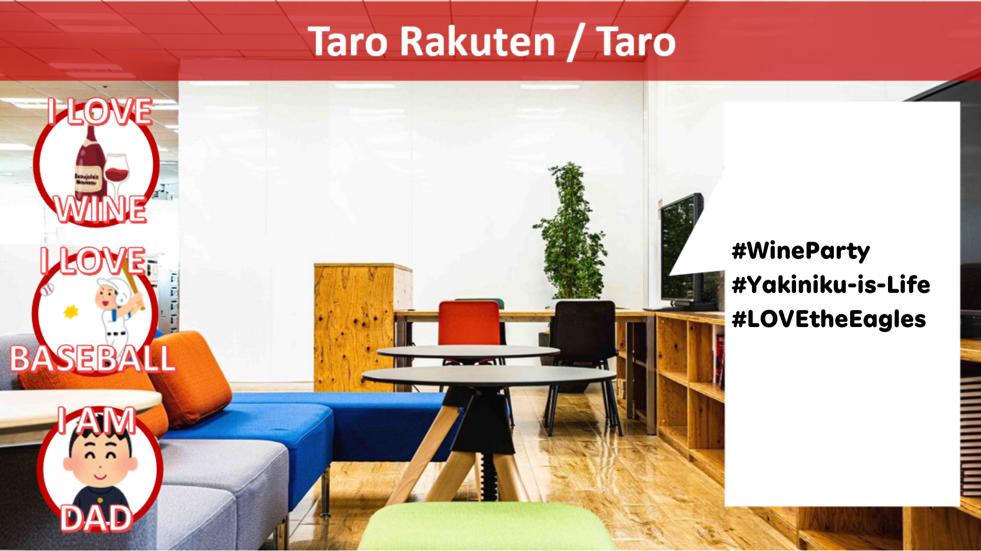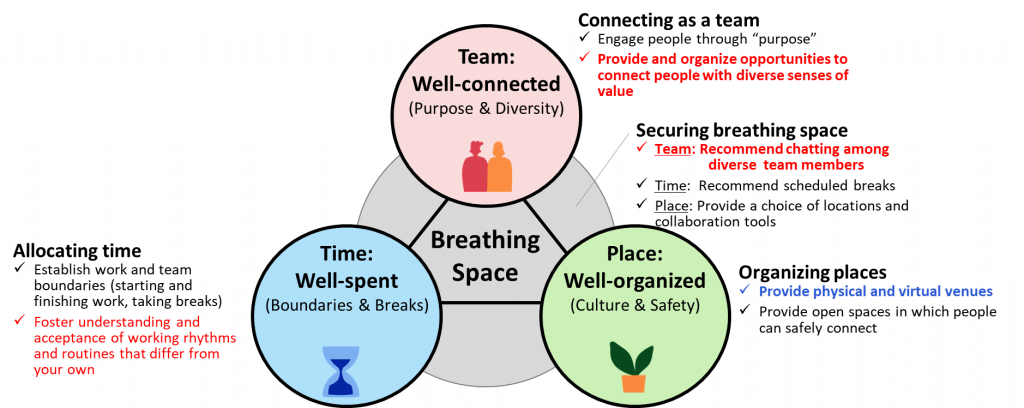In the previous column, we introduced the challenges of onboarding in a hybrid work environment and one of the measures the Rakuten Group employs to overcome these challenges, namely, the “50-person 1-on-1” approach to ensure the quantity and quality of connections.
In this installment, we will introduce tools to promote casual communication when connecting with others in online meetings with an emphasis on highly effective measures that can be used during the onboarding process as well as when meeting someone for the first time.
A reduction in casual communication
Although we’ve recently seen an increase in the number of people returning to the office for work, since there are cases where someone has not come to the office, meetings continue to be conducted mainly online.
Online meetings have done away with the need to reserve a meeting room or head to one when the time has come, making it easier to conduct meetings. But as a consequence, there are probably more than a few people who find themselves joining one meeting after another in succession.
The division that carried out the Rakuten Group 50 1-on-1 meetings initiative introduced in the previous column recognized that, after remote work got underway, casual communication among employees, such as casual conversations and chance encounters during breaks and after work, decreased and internal networks didn’t grow. Of particular note was that it seemed as though “lateral communication” that transcended team boundaries was noticeably insufficient compared with the past.
In addition, during remote meetings, there was a tendency for the discussion to end on only work-related matters, and there was also none of the chit-chat that had often taken place before and after meetings.
People who have worked together in the office since before the shift to remote and hybrid working styles have been able to foster human relationships built up over time. But for those who joined the company or transitioned to a new department after this shift, the hurdles in building new relationships in their new surroundings are higher than before.
One of the biggest challenges posed by this new working environment is how to promote interaction among colleagues and, in particular, how to support new members in an inclusive manner upon their arrival.
Rakuten Group initiatives (2): Self-introduction virtual backgrounds
Another initiative introduced by the division in response to the hybrid work environment provides employees with materials designed to spark or expand casual conversations during online meetings, namely, self-introduction virtual backgrounds.
These virtual backgrounds are intended to introduce something personal about oneself. Members can use the prepared icons to highlight their attributes and interests or, if they want to introduce some facet of themselves that isn’t included in the icons or is a little more specific in nature, they can create their own original virtual background using text and hashtags.


The use of these virtual backgrounds has led to the start of conversations: “Oh, you like _____? I do, too.” Even in meetings with people from other departments not involved in this initiative, there have been cases in which the virtual background has led to similar inquiries and comments.
When you meet someone with whom you share a common interest, or who is from the same hometown, it’s only natural to feel a sense of kinship toward them, which positively affects the way you treat them. Also, when you encounter someone who has an interesting hobby, or an unexpected facet that would be indiscernible through regular daily communication, you would likely want to ask them about it.
In addition to creating opportunities to engage in chatting by enabling others to learn something about your personality or lifestyle, these virtual backgrounds also make it easier to build working relationships by helping others to feel an affinity toward you.
According to a survey conducted after their introduction, the virtual backgrounds have been downloaded by more than two-thirds of those in the division, and more than two-thirds of those who use them feel they have created opportunities for communication. Furthermore, more than half of those who have used them credit the virtual backgrounds for enabling the making of new acquaintances.
It also goes without saying that the virtual backgrounds have proven very effective when used in the 50-person 1-on-1s conducted during the onboarding of new arrivals to the organization.

In light of Ogata (2008)’s “Classification of Learning Content in the Organizational Socialization Process,” this initiative applies primarily to the learning of (2) [the] Names, positions, hobbies, personalities, and backgrounds of workplace colleagues. And as for (3) Relationships within the workplace and organization, rather than learning, it could be viewed as contributing to the building of such relationships.
Connections to collective well-being
Similar to the 50-person 1-on-1 meetings introduced in the previous column, this virtual background initiative is strongly connected to “Providing and organizing opportunities to connect people with diverse senses of values” (Team) and “Team: Recommending chatting among diverse team members” (Breathing space). And, from the perspective of deepening your understanding of others. It is indirectly related to “Fostering an understanding and acceptance of working rhythms and routines that differ from your own” (Time). Additionally, within “Providing physical and virtual venues” (Place), it plays a role in realizing such a virtual space.

Blue text: Self-introduction virtual backgrounds
Red text: 50-person 1-on-1 meetings and self-introduction virtual backgrounds
The combination of the 50-person 1-on-1s and the self-introduction virtual backgrounds provides well-balanced coverage across the elements of collective well-being while being somewhat weighted toward the Team element.
What makes the self-introduction virtual backgrounds introduced in this column unique is that they initially present a list of qualities about yourself rather than requiring you to verbally tell others those qualities one by one. This makes it easier for others to identify the things you share in common and that they might want to ask about. It helps to speed up the start of conversations, enabling more time to be spent exploring the content of the discussion in greater depth.
Like the previously introduced 50-person 1-on-1 meetings, this virtual background initiative can be viewed as another measure that capitalizes on the unique nature of a hybrid working environment. Furthermore, even if opportunities to work in the office should increase in the future, this will prove an effective measure as long as online meetings are conducted.
In this and the previous column, we introduced two examples of Rakuten Group initiatives. These ideas for overcoming organizational issues were made possible by first gaining an understanding of these issues. We encourage you to also try creating innovative means similar to these approaches to address issues in your organization.
And when considering such innovative means, please refer to our Best Practices for Collective Well-being guidelines for inspiration.
Work cited:
Ogata, M. (2008). A Comprehensive Examination of the Organizational Socialization Process of Young Workers, Konan Business Review, 48 (4), pp. 11-68.

